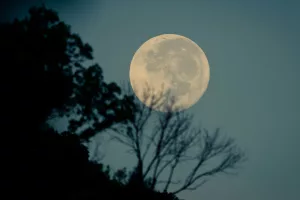Witnessing the green flash at sunset can feel like catching a glimpse of a rare and magical phenomenon, and understanding the science behind it only adds to its allure. This optical marvel is not just a trick of the eye but a fascinating interplay of physics, atmospheric conditions, and geography. Let’s delve deeper into what causes the green flash and how you can increase your chances of seeing it. The green flash is a fascinating result of atmospheric refraction, a process where light bends as it travels through different mediums. When the sun sets, it lies low on the horizon, and its light must travel through a thicker slice of Earth’s atmosphere compared to when it’s overhead. This additional atmosphere acts like a massive prism, separating the light into its component colors.
The Science of Atmospheric Refraction
The green flash captures our imagination, but it is rooted in the science of light and how it interacts with the Earth’s atmosphere. Let’s explore this further.
Dispersion of Light
The light from the sun is composed of a spectrum of colors, from red to violet. As sunlight passes through the atmosphere, shorter wavelengths like blue and green bend more than the longer red and orange wavelengths. However, the blue light is scattered in all directions, which is why the sky appears blue. The remaining visible shorter wavelength is green, which can sometimes be seen just above the setting or rising sun.
- Why Green?: The particular prominence of green is due to the fact that after the blue light is scattered, the next dominant color is green. This brief moment of visibility right as the sun disappears or reappears is what is observed as the green flash.
The Role of Atmospheric Layers
The atmosphere is composed of layers, each with different temperatures and densities, creating varying conditions for light refraction.
- Temperature Inversions: Sometimes the air near the surface is cooler than the air above, a condition known as a temperature inversion. This can create optical phenomena like mirages and enhance the conditions needed for a green flash.
- Density Gradients: Changes in air density can also bend light in unique ways. As light travels through layers of air with different densities, the bending effect can bring out the green color more prominently.
Optimal Conditions for Viewing
Several conditions have to be just right for the green flash to be visible. Understanding these can help you plan your sunset viewings more effectively.
Atmospheric Conditions
- Clear Horizons: One of the most crucial factors is having an unobstructed view of the horizon. This is why bodies of water, such as oceans, frequently provide the best locations for observing the green flash—there are fewer obstacles like trees or buildings to block the view.
- Stable Air Layers: The atmosphere should be relatively stable with minimal turbulence. Turbulent air can distort the path of light and obscure the green flash.
- Weather Factors: Low humidity and clear skies enhance visibility. Clouds, especially at the horizon, can prevent the flash from being seen. Even slight haze or pollution can impact the clarity of the atmosphere and reduce the chances of seeing the green flash.
Geographical Considerations
- Coastal Regions: Coastal areas are prime spots due to the clear, flat horizon over the sea. The water can also reflect the light, potentially enhancing the visibility of the flash.
- Mountainous Areas: While they offer beautiful sunset views, the uneven terrain and potential for atmospheric disturbances make these regions less ideal for seeing the green flash.
Timing and Patience
- Sunset and Sunrise: The most common times to witness the green flash are during sunset and sunrise. The low angle of the sun during these times maximizes the refraction effect.
- Duration and Timing: The entire event lasts just a few seconds, meaning that timing is crucial. Arrive early and pay close attention as the sun dips below the horizon.
Types of Green Flashes
Not all green flashes are created equal. There are actually different types of green flashes, which can vary based on atmospheric conditions and the observer’s location.
Inferior Mirage Flashes
These occur when the air near the surface is cooler than the air above it, a common occurrence over water. This temperature inversion can create a mirage that makes the green flash more visible.
- Example: Imagine watching a sunset from a beach in California. On a cool evening, the air over the water is cooler than the air above, creating the perfect conditions for an inferior mirage green flash.
Mock Mirage Flashes
In contrast, mock mirage flashes happen when the air near the surface is warmer, often observed from higher altitudes or in desert conditions. This type of flash might appear as a distorted or elongated green band above the sun.
- Example: Observers in the desert regions of Nevada might catch a mock mirage flash due to the warm air near the ground, making it appear as a stretched green band.
Other Variants
- Novaya Zemlya Effect: Named after the Russian archipelago, this phenomenon occurs in polar regions where light is bent around the curvature of the Earth, creating prolonged green flashes.
Real-Life Experiences and Observations
Let’s hear about some real-life scenarios where people have successfully observed the green flash.
- Beach Sunset in Hawaii: On a clear evening in Maui, with the horizon unobstructed by clouds, the green flash was visible for a second or two right as the sun dipped below the ocean. The stable air and low humidity contributed to a perfect viewing experience.
- Cruising in the Caribbean: A passenger on a cruise ship was treated to a spectacular green flash as the ship sailed westward. The combination of a clear horizon and the ship’s altitude above sea level provided an ideal vantage point.
- Arctic Adventures: During the polar summer months, travelers in Arctic regions have reported seeing extended green flashes due to the prolonged sunset periods.
Tips for Green Flash Enthusiasts
If you’re eager to catch this elusive phenomenon, here are some practical tips:
- Timing is Key: Arrive well before the sunset to secure a good viewing spot. The green flash occurs just as the last edge of the sun dips below the horizon or just as it rises.
- Use Binoculars: While you should never look directly at the sun, using binoculars right at the moment of sunset (when the sun is not too bright) can help you spot the flash more clearly.
- Photography Tips: If you’re hoping to capture the green flash on camera, use a tripod for stability and set your camera to a high shutter speed. This will help you capture the brief moment without motion blur.
- Join a Group: Sometimes, sharing the experience with others can increase your chances of spotting the flash, as several pairs of eyes can cover more of the horizon.
- Check Local Weather: Before setting out, check the local weather forecast. Clear skies and calm weather are your best allies in this hunt.
- Scout Locations: Find a high vantage point if possible. Elevation can sometimes offer a better viewing angle and reduce atmospheric distortion.
Common Misconceptions and Mistakes
Many people miss the green flash due to common misconceptions or simple mistakes.
- Misjudging the Timing: The green flash is incredibly brief, often lasting just a second or two. Many people miss it because they look away too soon.
- Looking in the Wrong Conditions: Attempting to see the green flash when the atmospheric conditions aren’t right can lead to disappointment. Always check the weather and ensure a clear horizon.
- Assuming it’s Always Visible: Even under optimal conditions, the green flash doesn’t occur every night. Its visibility can be influenced by a variety of factors, including unseen atmospheric variations.
Understanding the Rarity and Beauty
The allure of the green flash lies not just in its scientific explanation but also in its rarity and beauty.
- Why So Rare?: The precise alignment of atmospheric conditions needed makes the green flash an uncommon sight. This rarity adds to its mystique and appeal.
- Cultural Significance: Throughout history, the green flash has inspired myths and legends. Some cultures view it as a sign of good luck or a harbinger of change.
Personal Experiences and Anecdotes
Hearing about others’ experiences can enrich your understanding and appreciation of the green flash.
- A Family Tradition: One family in Florida has made spotting the green flash a cherished tradition, gathering on the beach each year to watch the sunset together.
- Sailing Stories: Sailors often share tales of seeing the green flash during long voyages, where unobstructed ocean horizons provide frequent opportunities to witness this phenomenon.
Further Explorations and Learning
For those truly captivated, there are ways to deepen your understanding.
- Scientific Publications: Numerous research papers delve into the optical physics of the green flash, providing a deeper scientific context.
- Documentaries and Videos: Watching documentaries or time-lapse videos can offer a visual understanding and appreciation of how and why the green flash occurs.
- Educational Workshops: Some coastal observatories offer workshops or guided tours focused on atmospheric phenomena, including the green flash.
The green flash remains one of nature’s most captivating optical phenomena, a beautiful interplay of light and atmospheric science. With the right conditions and a bit of patience, you might catch this fleeting green glimmer and experience a moment of wonder that many only dream of. Happy sunset watching!



